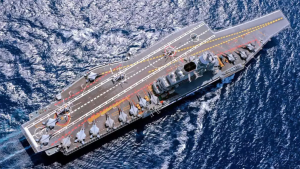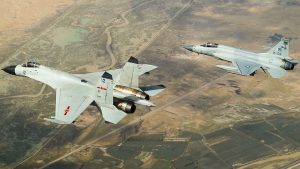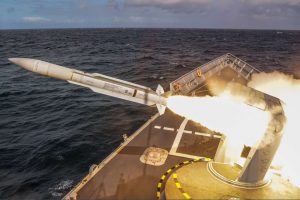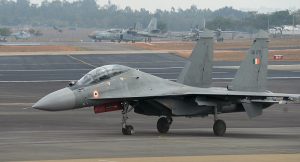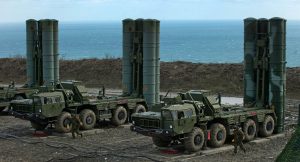The scenarios of Kashmir Fire
The release of the new “Kashmir Fire” DLC and the accompanying v1.03 upgrade for CMO is just around the corner. Let us take a look through the scenarios in this hypothetical near-future campaign, based on the historical and current tensions between India & Pakistan, as well as their respective allies.
1. Border Skirmish
Ever since the Indian Subcontinent was independent of Great Britain, conflict between the predominantly Hindu Indian population and predominantly Muslim Pakistani population has been practically constant. With several official and unofficial conflicts taking place between 1947 and today, there is plenty of bad blood between the two nations.
Recently insurgents in northern Pakistan have increased attacks into Indian held Kashmir. Indian forces have put pressure along the border to contain insurgents to Pakistan, but are so far unsuccessful. Pakistani forces have also engaged with these insurgents, however the frequency of attacks within Pakistan is minimal in comparison. Indian Armed Forces are massing in the Kashmir and Punjab regions to bolster local police and military forces in an effort to stem the insurgent attacks.
Three days ago, Indian forces launched a short incursion into Pakistan chasing after withdrawing insurgents, they retreated into India quickly, however their presence was known. Pakistan strongly denounced the Indian military action outside of their borders, and warned of a retaliation in case of a repeat offense. Tensions between the two South Asian powers are running high, and conflict appears inevitable.
Yesterday morning, Pakistani Forces made true their promise to engage any Indian forces that crossed the border into Pakistan. In addition to attacking Indian forces in Pakistan, Indian Forward Operating Bases on the other side of the border were attacked as well. The Pakistani operation also resulted in an air brawl, in which aircraft from both sides freely engaged each other.
The afternoon of 19 October was relatively calm, with both sides temporarily standing down and recovering from the events of the morning. The Indian public is outraged and demands that Pakistan pay for the lives that India lost. Following an emergency meeting of top Indian officials, the decision was made to make a retaliatory strike against Pakistani military sites.
While neither side is officially ready for conflict, it appears that the two countries will soon descend into all out conflict.
After India’s broad retaliatory actions, all diplomatic solutions have been thrown out the window for the short term. India and Pakistan have fallen into armed conflict on all fronts, and Indian forces are advancing into Pakistan, albeit slowly. Pakistan is putting up firm resistance in the air and on the ground, but a small Indian flotilla has effectively blockaded Pakistan’s coast.
Many tribal leaders in the northern mountains of Pakistan were initially highly critical of the opening of hostilities with India. This led to a strong division in the Pakistani military, as many of those who call the mountains home were strongly influenced by these local authority figures. Yesterday, large units of the Pakistani Air Force and Army defected to join the Mountain Alliance.
The Territorial Government of Gilgit-Baltistan declared autonomy from Pakistan and has attempted to remove themselves from the conflict, however neither India or Pakistan recognized this claim and are both addressing the Mountain Alliance as terrorists.
In addition, China has stated that they are going to remain out of the conflict, but are closely monitoring the conflict and will act in their best self interests. The United States has sent the John F. Kennedy Strike Group to monitor the situation from the Arabian Sea. The international community is strongly attempting to calm the conflict, however it is clear that neither side is showing any intention of slowing down.
Combat has been raging for nearly two weeks along the frontier, and neither side has made significant advances. Indian forces have taken high casualties attempting to dislodge Pakistani forces around Lahore, and so far have been unsuccessful despite an intense air and artillery campaign. Pakistani forces have also held extremely firmly at Karachi against a fairly broad Indian ground offensive.
The Mountain Alliance has proven itself a tough nut to crack, despite having no international support and seeing offensives launched against it from both Pakistan and India. Neither country is throwing a huge amount of resources at defeating the Mountain Alliance, although they have been causing issues for both countries’ forces.
Mountain Alliance forces have declared that if they continue to be encroached on by Indian forces, that they will make the country pay. India dismissed this, as the Mountain Alliance lacked any sort of credible offensive capability against the Indian population, until twelve hours ago.
After narrowly avoiding nuclear catastrophe, the Indian Military stepped up its offensives in all spheres of combat. The Mountain Alliance is still holding firm, however their Air Force is completely in shambles. Pakistani forces are on the run, however they are setting up defensive lines around major cities and infrastructure.
American and Chinese forces are closely monitoring the situation from the Indian Ocean. American diplomats are attempting to draw down the crisis, while Chinese diplomats are attempting to supply Pakistan. There have been reports of Chinese aircraft being shipped to Pakistan to supplement its dwindling Air Force, however these remain unconfirmed.
The Pakistani Navy has stayed in port at Karachi, maintaining its status as a fleet in being. Indian forces have maintained standoff from the coast due to the presence of land based SSMs. Both Indian carriers have been sidelined early in the conflict due to technical issues, but their appearance in the waters off Pakistan is near.
Four days ago Indian Naval Forces undertook a vast operation to degrade Pakistani naval and coastline capabilities and achieved high levels of success. Almost the entirety of the Pakistani Navy was sunk, either in the seas near Karachi, or at their moorings in the city. In addition, large numbers of Pakistani naval aircraft were destroyed, as were SSMs.
In a desperate plea, Pakistan acquired a number of old Chinese aircraft to supplement their dwindling air force. China has changed stances and has discouraged India from further offensive action, leading to speculation that China may soon support Pakistan outright. China has increased their naval presence in the Arabian Sea, and is stepping up air patrols along the border.
The United States is still closely monitoring the situation and has a strong naval force in the region.
The Indo-Pakistani War has stunned the world. The speed at which Indian forces have advanced towards major Pakistani cities has surprised many foreign observers, but the losses both sides have taken is staggering. Pakistan is near the brink of defeat, and has pleaded for foreign assistance to China as well as other Muslim countries. China announced it was sending an expeditionary force to Pakistan to “protect the interests of the Chinese People and maintain security for Chinese assets abroad”.
Saudi Arabia and Indonesia also answered the call of Pakistan, sending forces to protect major Pakistani targets. Open conflict between China and India doesn’t seem near, however the world is fearful of the possibility. Pakistan will likely try to lead a new counterattack against Indian forces, but they need to stem the flow of Indian forces and supplies to the front line first.
The Pakistani counterattack against Indian forces has been broadly successful, and some of the pressure on the Pakistani civilian population has been reduced. China is no longer disguising its involvement, and has sent aircraft and material to support the Pakistanis. In addition both Chinese aircraft carriers have left port and are enroute to the Indian theater to open an air front on the eastern half of the country. Indian naval forces are not in any position to resist major Chinese naval operations, causing fears of a blockade of India.
India has looked for foreign assistance, but none have come to their aid. Many western countries have sharply criticized the Chinese intervention, but none have taken forceful measures. The United States announced that the Abraham Lincoln Strike Group would be deployed to the region to continue to protect maritime trade and safe passage. They will support the currently deployed Kennedy Strike Group.
In the last week, Pakistani and Chinese land forces have advanced over 250 kilometers, moving the frontline from well inside Pakistan to between 40 and 70 kilometers into India. Chinese armor and aircraft are causing incredible damage and disruption to Indian forces, and allowing the remaining Pakistani forces to capitalize. With the stunning advance, many Western observers fear India is in danger of losing the war. American forces have closed in near the shore to display their presence, and an expeditionary strike group has deployed to the area.
The United States has ordered all of its civilians in India to return to the United States, however India closed their major international airports, stranding hundreds of Americans in the war torn country.
It took little more than a month for the Pakistan-India conflict to erupt into a war involving superpowers, now the intense regional conflict has sparked global involvement. The United States successfully evacuated their civilians from the conflict zone, but not without resistance. Pakistan fully enforced their no fly zone and the United States had to fight their way in to rescue their citizens. Pakistan was quick to criticize the United States “reckless aggression and blatant intervention”. The United States fired back stating it was “defending its citizens abroad against the reckless warfare being conducted by Pakistan”.
This incident was enough to spark conflict between the United States and Pakistan. The day after the evacuation, a Pakistani gunboat sailed within 500 meters of the USS Pickney, an American destroyer operating about 100nm off the Pakistani Coast. It is unclear who fired first, but the Pickney sank the gunboat, and all Pakistanis onboard were killed. Pakistan declared that it would “fire on any American forces without hesitation” in response.
Due to the increased tensions with the United States, Saudi Arabia and Indonesia have withdrawn support from Pakistan.
A week after the United States formally intervened against Pakistan, India has stemmed the advance of Pakistani forces and the frontline has settled. China has deployed both the Liaoning and Shandong carrier strike groups to put additional pressure on Indian forces, and the United States has responded by bringing the Abraham Lincoln strike group to the theater.
China stated that it would engage any American aircraft attacking Pakistani targets, which has led to a slight lull in American air operations as brass and politicians weigh their options. Last night, the US congress passed a secret vote, and today the results of that vote will be seen.
Pakistan and China have been halted on the ground, and the Indian military can catch its breath. The majority of the forces engaged are in the Kashmir region and surrounding areas, however the south has been the most dynamic theater. India, with the help of the United States, is pushing hard to attempt to isolate Pakistan from the sea. The major Indo-American victory at sea last week has made this goal a very real possibility.
Pakistan has mined the waters off of Karachi in order to prevent American and Indian shipping from threatening the shore.
India has ambitious plans for the future of the conflict, and today those plans will begin to unfold.
The United States’ involvement in the Indo-Pakistani conflict has completely shifted the tide of the conflict in favor of the Indians. After the successful landing at Karachi, Pakistan’s major lifeline to the sea is gone. Ground fighting is intense, and neither side is conceding an inch of land. India is pushing into Pakistan, but it is at high cost to both sides.
China has stepped up its involvement immensely on the ground, and is keeping Pakistan reinforced through intense air commitment and airstrikes against the Indian forces. The area around PAF Mianwali and PAF Murid is the most heavily defended airspace in the world, thanks in large part to the Chinese IADS and CAP. India is going to struggle to crack the tough shell that has become the greater Islamabad area.
In the last month, Indian forces have pushed Pakistan back to the outskirts of Islamabad. China and Pakistan have fortified the airspace heavily in the area, with an intense IADS and combat air patrol net. The Indo-American coalition has strangled the Pakistani capital, but Pakistan is not backing down.
American forces still have stayed off the ground, despite Indian efforts to receive support on the ground. Despite not deploying boots on the ground, the United States has launched an intense air campaign against the Pakistani and Chinese forces. The Indo-American coalition is preparing for an incredible air offensive against the stronghold of Islamabad, which will prove to be a very difficult task.
Indian forces are closing in rapidly on the last holdouts of Pakistani resistance. The fighting has been brutal, with thousands of casualties on both sides. China has withdrawn the majority of their forces, however aircraft are still based at Pakistani airbases to support the dwindling Pakistani Army.
The war is nearing a close, with a clear Indian victory in sight. Pakistan has stated that they will fight to the end through whatever means necessary, including a nuclear option. Every world power has strongly denounced this option and the United Nations are frantically attempting peace negotiations, but neither India nor Pakistan are interested in anything short of complete victory.
Command: Kashmir Fire announced
Out on May 6th on MatrixGames and Steam .
Don’t stop me now: Command PE v1.15.5 now available
 It has been 10 months since the last official PE release, and the WS dev team has been pretty busy on multiple fronts. The time is now ripe for another significant official update: Command PE v1.15.5 is now available to new and existing pro customers.
It has been 10 months since the last official PE release, and the WS dev team has been pretty busy on multiple fronts. The time is now ripe for another significant official update: Command PE v1.15.5 is now available to new and existing pro customers.
The new update brings a deluge of additions and improvements big and small, including some features explicitly developed as customer requests. These include:
New sensor type: Passive Coherent Location System (aka “Passive Radar”). For a general background on PCLS, see here. PCLS systems can be very useful both as a covert means of airspace surveillance and as a potent counter-VLO asset to be combined with other, more traditional sensors. They do have several drawbacks and vulnerabilities (for example, they can be limited in altitude coverage because of their bistatic nature, and each receiver must have clear LOS to both the target and the transmitter in order to process the reflection), but as long as these can be accommodated, PCLS sensors can significantly enhance an IADS and complicate enemy efforts to disrupt it.
New major feature: Distinct mobile ground units. In addition to modelling mobile forces as “aimpoint facilities” , it is now possible to explicitly model individual vehicles with their own customized properties such as armor, propulsion, mounts, sensors etc. These new units now have their separate data annex (“Ground Units”), and can be browsed on the DB viewer: Apart from the obvious benefits of easier targetability and clearer per-unit cargo assignment, the new-style ground units have unlocked certain brand-new capabilities, such as true amphibious vehicles (with distinct speed & fuel consumption properties overwater and on land).
Apart from the obvious benefits of easier targetability and clearer per-unit cargo assignment, the new-style ground units have unlocked certain brand-new capabilities, such as true amphibious vehicles (with distinct speed & fuel consumption properties overwater and on land).
New feature: Formation presets. You can now quickly arrange the members of a group using any of a range of formation presets:
The presets work with any unit type and allow quickly positioning units relative to each other and to the group’s lead. You can either assign the relative positions to the group units or, if in ScenEdit mode, you can directly “teleport” the members to their assigned positions (this can be very useful for scenario authors, obviously).
Major enhancements to Command-CLI. Command-line execution was one of the hottest new features of the v1.15 upgrade (see this article by Northrop Grumman on how they have been using it for a DARPA initiative to train AIs with literally quadrillions of scenario variants), and we have receive lots of feedback and suggestions as to how to improve its utility. Two big new features are:
- You can now launch a CLI instance in interactive mode, using the Lua TCP-socket as the control interface. This ability combines the high-performance, low overhead and parallel execution benefits of CLI with the full-control interactivity of the full-GUI client.
- CLI mode now supports both coarse and finegrained timestep modes.
Improvements to Multiplayer. The layout of the various MP-specific UI elements has been improved to be less intrusive, the transmission delay of scenario snapshots has been sharply reduced using a “delta” comparison engine, and various fixes and tweaks have been added.
New doctrine/ROE/WRA feature: You can now define decimal figures for WRA engagement and self-defence ranges, using the relevant Lua methods. For example:
ScenEdit_SetDoctrineWRA({guid = ‘d7db0f50-bf1a-4977-ad57-15c30ef3f91a’, target_type=’Aircraft_Unspecified’, weapon_id=134}, {‘2′,’inherit’,2.5,7.8})
In addition, a new message type (Doctrine/ROE) has been added to the message options, and thus can be configured to appear on the message log, raise a pop-up etc. This makes it easier to receive immediate feedback/confirmation on script-driven WRA changes.
Various tweaks & improvements on the event-export tables, directly based on user feedback.
You can now control the jettison of aircraft stores through Lua. This is a more powerful and flexible method than the GUI, as it allows dumping stores at any arbitrary point (not just when under attack), and provides finer control as to what items will be jettisoned (all stores, externals only, heavy stores only, or even a specific weapon ID)
Plus a wide assortment of other tweaks, fixes and improvements across the various functionality tiers of the application.
Work is already underway on the next update releases. Stay tuned, as there are some impressive things on the horizon!
Command: Modern Operations wins the Charles S. Roberts 2019 award in the category “Best Modern Era Computer Wargame”

Triple whopper: Updated Community Scenario Pack with 28 new scenarios
 It has been a busy week, that’s for sure. Yesterday we had the release of the massive v1.02 update and the new Command-LIVE “Sahel Slugfest” scenario, and today it’s the turn of another Command stable, the Community Scenario Pack (CSP). Brandon Johnson (Kushan) has updated the pack with updates & refreshes to existing scenarios, as well as 28 brand-new creations. Let’s take a look:
It has been a busy week, that’s for sure. Yesterday we had the release of the massive v1.02 update and the new Command-LIVE “Sahel Slugfest” scenario, and today it’s the turn of another Command stable, the Community Scenario Pack (CSP). Brandon Johnson (Kushan) has updated the pack with updates & refreshes to existing scenarios, as well as 28 brand-new creations. Let’s take a look:
Airstrikes on Zinder, 2025 – This scenario assumes that in the near future Niger will experience a civil war. An organization known as the ZLA seeks to establish a separate country in the Nigerien territory of Zinder. It has already occupied the largest city in the region, also known as Zinder, and is presently operating as a de facto state.
Assalto in Pakistan, 2018 – After the multiple terrorist attacks by Pakistan .. NATO has decided to teach him a lesson .. by sending the nearby Italian fleet.
Baltic Fury 2 – Borscht on Bornholm – In this scenario you are playing the Soviet side and are charged with conducting an airborne and amphibious landing on Bornholm. NATO is on the backfoot so this should be a quick and relatively simple operation, but it’s essential that the island is seized and secured rapidly to allow for future operations.
Carrier Hunt, 2024 – China’s surprise attack hit every US-alliances in North-East Asia. While major military assets in Japan and South Korea took severe damage by Chinese ballistic missile strikes, Chinese forces have captured the Japanese Okinawa Islands and seized control.
Although the United States and its allies have suffered significant losses, they are still far from beaten…
This is a medium, single-sided battleset scenario with a duration of 2 days. You have two US Carrier Strike Groups with mostly three anti-ship weaponry: AARGM, LRASM, and Multi-Mission Tomahawk. Your primary target is Chinese Carrier ‘Shandong’ around Okinawa.
Galveston Gets a Mission, 1960 – Nikita Khrushchev believed that the role of the Soviet Navy was to support the Army, and once referred to surface warships as “molten coffins.” He did, however, believe that submarines, especially those armed with nuclear missiles, were a good idea.
During the Cold War, both the Soviets and the Americans used submarines to gather intelligence on each other and often tried to sneak submarines close to the territory of their rivals as possible. They also used cruisers and destroyers to find those submarines and to chase them away.
Greek-Turkish EEZ Conflict, 2021 – In late November, 2019 a diplomatic crisis erupted between Greece and Turkey when Turkey announced it had signed a memorandum of understanding with Libya outlining their maritime boundaries. This particular dispute, amongst all of the other conflicts simmering between the two rivals involved an agreement between Turkey and Libya that defined oil right for a newly found oil field in an area Greece claimed as part of its Maritime Zone (MZ).
Hell of the East, 2019 – In this alternate future, the dispute and arguments between Turkey and the United States of America lead the Presidential Republic to leave NATO in favor of its alliance with Russia.
Due to growing military actions from the Turkish armed forces in the contested waters, Greece agreed to allow the Italian forces to field it’s air defense batteries and part of it’s air force in Greek territories and move it’s Ocean-Capable fleet in International waters.
Leathernecks are Watching, 2025 – This scenario assumes that Indonesia is going through a period of civil unrest. Separatists in western New Guinea have renewed their efforts to force Indonesia to give them independence.
There is evidence that China is providing the rebels with financial and material support.
The rebels recently seized control of the town of Jayapura and nearby Sentani Airport. They have also taken two groups of American civilians hostage.
The only American vessels in the immediate vicinity are a surface group centered on (LHA 6) and the attack submarine (SSN 766).
Nile Delta Strikeback, 2012 – Israeli-Egyptian relations, in a grudging peace for 33 years, have once again flared into war. The Israeli Navy has deployed in force off the Nile Delta. Opposing it is only a pair of old Romeo submarines. Command either side for a different experience.
Operation Cachalot, 2023 – Pakistan is in the middle of a civil war between the loyal moderate government and the islamic radicals and the latter are winning. European Union, with France on the front line, is helping the loyal and trying to defuse the situation. Radicals allied groups conduct a surprise attack to France forces in Djibouti and hijack the French research ship Cachalot with 50 sailors on board in the Gulf of Aden, asking for France disengagement and sailing toward Pakistan. The negotiations do not produce any useful results and in a few hours the French merchant Cachalot will reach the main Pakistani port of Karachi. The French carrier group centered on Charles de Gaulle just arrived in the area of operation and is ready to take the merchant back and teach the Pakistan radicals a harsh lesson.
Operation El Dorado Canyon, 1986 – A highly detailed recreation of the April 1986 US air strikes on Libya.
On the 5th of April 1986 terrorists detonated a bomb in a Berlin nightclub. The bomb killed 2 American soldiers and a Turkish woman and injured 229 others, 79 of whom were American.
In response, citing evidence that the government of Libya was responsible, US president Ronald Reagan ordered airstrikes against Libya on the night of April 14/15, codenamed OPERATION EL DORADO CANYON.
Operation Locusta, 1990 – Following the invasion and annexation of Kuwait by Iraq, on September 25, 1990, the Italian Government sent eight multi-role Panzer Tornado IDS fighters (plus two in reserve) belonging to the 6th, 36th and 50th Wing in the Persian Gulf. Operation Desert Shield, which were deployed at the Al-Dhafra air base near Abu Dhabi in the United Arab Emirates.
The use of Italian aircraft in the Desert Storm operation represented the first operational use in combat missions of Italian Air Force aircraft after the end of the Second World War.
Operation Northern Stork, 2018 – Four EuroFighter aircraft from the Italian Air Force took off yesterday from the Grosseto military airport to the airport of Keflavik, in Iceland, to launch the NATO Interim Air Policing operation, called “Northern Stork”. The aim of the operation is to preserve the integrity of NATO’s airspace by strengthening Iceland’s skies surveillance, which does not have the capability and autonomous air defense structures. Italy contributes, with periodic shifts with the other countries of the Alliance, to this NATO mission.
Putin’s War – In the Jaws of the Bear, 2022 – The time had come to take the war to Russia. MAG-31 was to launch SEAD attacks from its base in Norway attacking from the landward flank. The USAF aircraft in Iceland would fly a circular route north of Jan Mayan Island launching a SEAD attack with their decoys, jammers and JASSMs and the USN would follow up that attack with a Tomahawk strike on the major Kola Peninsula naval bases and air fields.
Putin’s War – Midnight Sun, 2022 – The Baltic Crisis finally erupted into a full-scale NATO-Russian/Belorussia conflict on the morning of June 6th. The Baltics and the Suwalki Gap were rapidly overrun by the evening of the 7th with Russian forces reaching Kaliningrad by advancing west along Highway A16/E28 from Vilnius to Kybartai. They then turned southwestward reaching Highway 63 in Poland on the 11th, where they paused.
Under the midnight sun on the 7th Russian air forces bombed the Norwegian expeditionary air base at Banak and ports near Nordkapp. The war above the Arctic circle had begun…
Putin’s War – Operation Exodus, 2022 – After the onset of Russian military operations against Norway it was decided to move Norwegian Vessels, under maintenance or damaged, to Royal Navy ports and shipyards in the United Kingdom. Norwegian and British yard workers worked 24/7 to get as many of the vessel’s systems up as possible, and propulsion back online. By the 14th escorts were in place and the exodus to the UK ready.
Putin’s War – The Bodo Express, 2022 – On the morning of the 7th Russian air forces bombed the Norwegian expeditionary air base and port at Banak, near the Nord Kapp. By afternoon Russian paratroopers had seized the air field with Northern Fleet’s 61st Naval Infantry Brigade conducting a follow up landing at the port that evening. The 200th Separate Motor Rifle Brigade crossed the Norway-Russian border that morning brushing aside the tripwire Norwegian outposts. More follow up forces from 80th Independent Motor Rifle Brigade follow on advancing west.
Putin’s War – Threading the Needle, 2022 – As chaos continued to descend upon the Baltic all three nations jointly invoked NATO Article Five asking Brussels for aide. Debate raged in NATO General Council during the late week (June 1st and 2nd) until it was proven on Friday (June 3rd) that “Little Green Men” were appearing more and more frequently in the growing civil unrest. To date, the crisis had been confined to the Baltic States but at 18:00 UTC a French satellite pass noted the Russian SSBNs getting underway from the Kola Peninsula and other satellite passes confirmed the rest of the Northern and Baltic Fleets getting ready to stand up…
Royal Problems, 1962 – Following the Coup of September, 26th, 1962. Egypt immediately recognized the newly declared Republic of Yemen. Supposedly concerned over a possible Saudi intervention from the north and a British move from the south from the Protectorate Aden, Egypt actively supported the new Republic of Yemen.
In October 1962 the situation escalated quickly as the pro-royalist forces gained more and more support from Saudi Arabia. Additionally the United States of America sent weapons and aircrafts to the Kingdom of Saudi Arabia.
South Atlantic War, 1982 – Sneaky Beakies in South Georgia – Following the successful Argentinian occupation of the Falklands Islands and South Georgia, the first steps in the UK military response was to start to gain ground-level intelligence on the occupying forces.
This scenario is playable by the UK side only and re-creates the covert insertion of SBS reconnaissance teams by the SSN HMS Conqueror on the night of 18/19 April 1982.
Sumatra Crisis 1 – Mayday, 2022 – Indonesia is under a civil war, facing separatist rebels in North Eastern Sumatra, getting extensive support from abroad, against the official government. To stop the foreign assistance, Indonesian Navy started to board and inspect some merchant ships passing through Strait of Malacca and along the western Sumatran coast that could provide help to the rebels. More than one time ships coming and going from Singapore port were harrassed, causing considerable concern and tension. After a few days Singapore Navy started patrols along their line of communication to ensure freedom of navigation. The next time an Indonesia patrol boat stops and inspect a friendly merchant, hopefully Singapore Navy will be in position to perform a show of force.
Sumatra Crisis 2 – Trade Paralisis, 2022 – After the strong Singapore reaction to Indonesia inspections and harassment to merchant traffic around Singapore, Indonesia government stopped using ships for the activity and resorted to submarines, sinking any vessel suspected to bring equipment to the rebels in the Strait of Malacca. This is a inacceptable limitation for Singapore lines of communication, heavily dependent on naval traffic transiting in the strait. A special task force is immediately assembled to hunt the enemy submarines.
Sumatra Crisis 3 – Singapore Surprise, 2022 – In a final step to reduce merchant traffic providing help to Sumatran rebels, Indonesian Navy started placing mines East of Palau Lingga Island in Malaccan Strait. Singapore Navy immediately moved heavily escorted mine countermeasures vessels (MCV) to remove the weapons and establish full freedom of navigation in the area. This time Indonesia forces are ready to react in force and teach Singapore a harsh lesson.
The Desperate Hours December, 1985 – World War Three is entering its third month. Amazingly neither side has yet resorted to nuclear weapons but the balance of power is gradually shifting. Younger members of the Politburo prevented the old guard from implementing the “Seven Days to the Rhine” plan with its first use of over 600 nuclear weapons, arguing the Warsaw Pact’s conventional forces can carry the day.
In Moscow, the balance of power is shifting, the ministers who opposed the “Seven Days to the Rhine” plan have now been discredited and the nuclear war hawks have neutralized them. NATO intelligence begins to pick up indications of Soviet preparations for a nuclear strike on the Continental United States (CONUS), Alaska, the UK and France. NATO navies are out of position for this with most forces involved in the Battle of the Atlantic and reinforcing Israel in the Med. USS Pharris FF-1094, charged with defending the GIUK Gap, and a few P-3s are all that stands between a Soviet Yankee reinforcing Soviet nuclear forces in the Atlantic and maybe the tipping point in the balance to nuclear war.
The Laser Dance, 2024 – A few hours ago, China declared war on the United States and its two major alliances in the Pacific. Right after the war declaration, a massive Chinese ballistic missile strike had initiated. Many air bases in Japan and South Korea have neutralized, their air forces in the region suffered critical losses.
When a large scale of Chinese naval activity is detected near Okinawa Island, the United States Pacific Command made a decision to save one of its hidden cards, a Surface Action Group which was conducting tests of new weaponry in the region.
The Missiles of October Part Deux, 2020 – During the Spring of 2020, the new Coronavirus “COVID-19” strain caused serious disruption to the world order and economic systems, diverting the West’s attention from military matters to lock downs, market crashes and sealed borders. Quietly ties between Russia’s President Putin and Partido Comunista de Cuba (PPC), First Secretary, Raúl Castro warmed over this period of disruption. By late May, Russian engineers began construction on a series of bunkers south of Habana (Havana) which bore a striking resemblance to similar bunkers recently completed in Kaliningrad.
In mid-August Russian antishipping missiles took up position along the Florida Straits. Between 15 to 25 September, as chaos reigned in American and European cities, several Russian ships docked in Cuban ports disgorging Intermediate Range Cruise Missiles and their Transporter-Erector-Launchers (TELs). Satellite imagery took several days to analyze, due to the virus, but by October 3rd it was obvious that Iskandar missiles were being positioned in Cuba. The clock had been turned back 58 years!
The Olutanga Rebellion, 2020 – The Philippines has long struggled with civil unrest.
This scenario assumes that a separatist group has seized control of much of the island of Olutanga.
Two Cutters in the Gulf of Mexico, 2020 – In war and peace, the United States Coast Guard wages an endless battle to protect America and Americans from criminals and, sometimes, their own stupidity.
The new community scenario pack is, as always, available for download at the WS site: http://www.warfaresims.com/?page_id=1876 , and also on the Steam workshop.
The CSP now proudly counts 549 scenarios in its stable!








